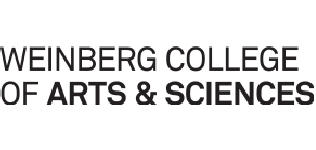DEGREE REQUIREMENTS,
Since 2019, ATP is excited to offer the opportunity to declare a minor. If you have any questions about the minor please contact our advisor for the minor, Sherwin Ovid.
DEADLINE TO DECLARE MINOR: A student can email a completed form to declare the minor to the ATP office as early as the first day of classes in the student’s first year. This is a popular minor and class sizes are limited so it is important to declare as early as possible. As such, we strongly advise any student interested in the minor to submit the form to declare by end of junior year and plan to have completed at least three of the six courses required of the minor by this point.
The final deadline in which the ATP office will accept the form to declare the minor is also the deadline in which a student must submit the petition to graduate, which occurs several months before a student’s graduation date. The petition to graduate deadline occurs a few months before a student’s graduation date. Consult this link for the list of petition to graduate deadlines for graduating in each of the coming quarters.
If a student has already submitted the petition to graduate well before the petition to graduate deadline but prior to declaring the ATP minor, the student can still declare the minor by emailing a completed supplemental petition to graduate form for the minor along with a completed form to declare the minor to both the ATP office and the ATP Director of Undergraduate Studies. These two forms must be received by the petition to graduate deadline.
MINOR,
TWO 200 LEVEL COURSES
210-0, 220-0, 230-0, 240-0, or 250-0
ONE HISTORY AND/OR THEORY COURSE
270-0 Contemporary Art Survey or 272-0 Critical Methods for Contemporary Art or 260-0 Studio Practice
THREE ADDITIONAL COURSES IN DEPARTMENT at the 300 level
372, 382, and 390 may be taken more than once and counted more than once if each course is a different topic
101 First-Year Seminar course may not be counted to fulfill any of the Minor Requirements
MAJOR,
THREE 200 LEVEL COURSES
210-0 Introduction to Drawing, 230-0 Introduction to Time-Based Art, and 240-0 Introduction to Sculpture
THREE HISTORY AND/OR THEORY COURSES
270-0 Contemporary Art Survey or ART HIST 260-0 Introduction to Contemporary Art, and two of the following: 272 Critical Methods in Contemporary Art, 372 Seminar, or 382 Studio/Seminar
ONE 260 STUDIO PRACTICE IN JUNIOR YEAR
pre-requisite for Studio Critique
ONE 360 SENIOR CRITIQUE IN SENIOR YEAR
SEVEN ADDITIONAL COURSES
Five must be at the 300 level, four must be studio art courses including at least two 382-0 Studio/Seminar or 390-0 Studio
A course may count toward both of these categories, but the total number of courses must be at least seven
372, 382, and 390 may be taken more than once and counted more than once if each course is a different topic
101 First-Year Seminar course may not be counted to fulfill any of the Major Requirements.
MAJOR LEARNING OBJECTIVES
WHAT WILL A STUDENT WHO COMPLETES THE MAJOR IN ART THEORY AND PRACTICE LEARN?
The goal of an undergraduate education in Art Theory and Practice is to prepare students to contribute forcefully to contemporary art and culture—in its reception and interpretation, its presentation and distribution, and, most of all, its production. For a work of art to be meaningful to today’s audiences, it must engage with contemporary issues and with the larger cultural context. Therefore, the students in Art Theory and Practice consider current issues alongside historical traditions, interpretation and analysis alongside technical skills, and theory alongside practice. Students experiment with a wide range of artistic strategies and modes of exploration and become familiar with diverse theoretical perspectives and discourses. Understanding how to effectively use art to ask questions and create meaning positions students to become conscientious and influential cultural producers of the future.
Objectives – students acquire skills in:
- Visual analysis
- Creative problem solving
- Technical abilities
- Critical thinking
Through the completion of the degree, students learn to:
- Effectively convey thoughts, ideas and questions in artistic form
- Develop the ability to interpret and articulate the often-multiple meanings that are conveyed through images, and parse out the mechanisms through which those meanings are conveyed
- Locate contemporary art practices within historical contexts and lineages, and use these shared histories as tools in the making of contemporary works
- Employ multiple theoretical frameworks that draw on a variety of other disciples in the sciences and the humanities
- Identify and solve problems within a variety of physical, technological, social and cultural contexts
- Establish a self-motivated and self-directed artistic practice centered around particular themes, issues or questions relevant to both the student’s interests and contemporary culture.


